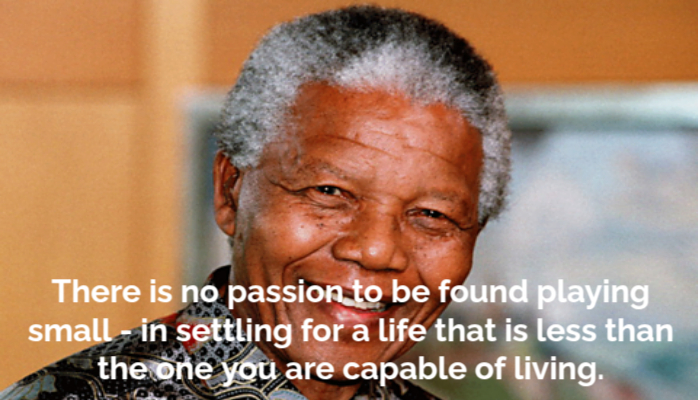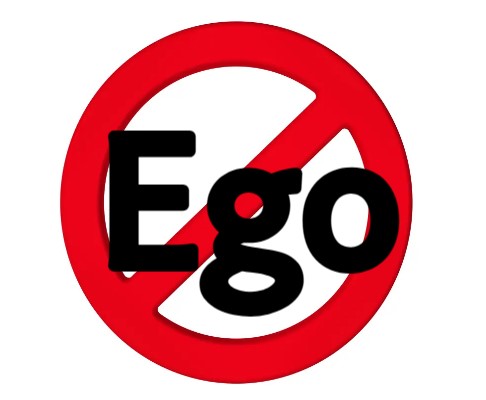Fertility Breakthroughs: Navigating Stress, Age, and the Future of Reproductive Health

Today I am writing about fertility. But first, let’s retrace the steps and see how I ended here. Last week, I received The Centre for Human Reproduction’s (CHR) September and October 2025 newsletter in my email. I opened it up to skim and ended up reading a number of articles and papers. While reading, it occurred to me that we are in an era where people are increasingly delaying starting families, and many couples are confronting realities they once thought were far off.
Some of these realities include declining fertility, complex endocrine disorders, and the lure of genetic selection among many other issues. The September/October CHR Voice newsletter raises a number of urgent questions: What role does stress play in reproductive health? How do conditions like PCOS (Polycystic Ovary Syndrome) complicate fertility? Can a woman safely carry a pregnancy past 40? What about male fertility, and what are the real promises and risks of “designer babies”?
Below, I explore these themes in a more accessible, less technical, and more conversational way so that as many of us as possible can be enlightened on some of these aspects.
The Hidden Issue of Stress on the Path to Parenthood
Stress is often dismissed as a vague “modifier” to fertility. But in truth, chronic psychological stress and the biological effects it triggers can undermine the reproductive potential in surprising ways.
For women, chronic stress can disrupt the balance of the hypothalamic-pituitary-ovarian axis, interfering with regular ovulation, altering hormonal rhythms, or causing subtle defects in the luteal phase. For men, stress is linked to declines in testosterone, sperm quality, and sexual function. Even more tricky is the self-reinforcing cycle whereby fertility struggles themselves can heighten stress, which in turn can worsen outcomes.

Unfortunately, we don’t yet have large, gold-standard clinical trials proving that stress reduction alone cures infertility, but there is consensus among fertility specialists on some benefits. Incorporating mental health, counselling, mindfulness, or resilience training is essential, not optional, in most fertility programs.
PCOS is Not Just a Fertility Condition
Polycystic ovary syndrome is frequently framed as “the cause of failed ovulation,” but in truth, it is a multifaceted metabolic/endocrine disorder whose implications stretch far beyond conception.
Women with PCOS typically carry a heavier metabolic burden. These include insulin resistance, obesity, dyslipidaemia, and increased risk of type 2 diabetes or cardiovascular disease. For fertility, PCOS may bring irregular or absent ovulation, higher miscarriage rates, and suboptimal responses to ovarian stimulation.
The “beyond the basics” approach that the CHR newsletter emphasises is right. Treating PCOS is not just about conceiving; it’s about preserving long-term health. Lifestyle intervention (diet, exercise, weight loss) is the critical foundation.
In assisted reproduction settings, the treatment strategy must be individualised; ovulation induction (clomiphene, letrozole), gonadotropins, or IVF (often combined with insulin-sensitising agents) may all play roles.
One particularly tricky issue is that PCOS is heterogeneous. Some women’s primary challenge is insulin resistance, others are excess androgen, and others are hormonal signalling in the brain. That heterogeneity means clinicians must avoid one-size-fits-all prescriptions and lean into more tailored therapies.
Pregnancy After 40 is Possible, But Never Risk-Free
The notion of “having it all” later in life, career, stability, and then children, has become increasingly common. Yet one thing is constant: biology has its own clock, and the risks rise steeply after age 40.
As women age, both egg quantity (ovarian reserve) and egg quality (chromosomal integrity) decline sharply. This increases the chance of failed fertilisation, abnormal embryos, implantation failure, and miscarriage. Even when conception succeeds, maternal risks like hypertension, preeclampsia, gestational diabetes, placental problems, and caesarean delivery rise. Foetal risks, including chromosomal syndromes, growth restriction, and preterm birth, also grow.

Fertility clinics increasingly adapt their protocols for older women to ensure more aggressive stimulation, embryo banking across cycles, more scrutiny of luteal support and endometrial preparation, and more frequent use of genetic testing.
But it remains that clinical expectations should be realistic. Success rates are lower, risks are higher, and sometimes alternatives, such as egg donation, merit serious consideration.
That said, many women over 40 do carry healthy pregnancies to term, especially when monitored closely and managed by experienced reproductive teams. So, all is not lost beyond 40 for our dear women.
Male Fertility: The Overlooked Partner in Reproductive Journeys
Too often, fertility is framed as a “woman’s issue.” But male fertility plays at least a coequal role in almost half of infertility cases. Surprising, huh!
Sperm concentration, motility, morphology, and DNA fragmentation are all influenced by age, health, and lifestyle. Research suggests that as men age, sperm DNA damage and epigenetic changes increase, which may contribute to lower fertilisation rates or higher miscarriage rates. But because male fertility often gets less attention, many fertility programs under-prioritise male evaluation until late in the game.

Lifestyle factors loom large as well. Obesity, smoking, excessive alcohol use, exposure to environmental toxins, high scrotal temperature (e.g. tight clothing, hot baths) and systemic illnesses all degrade semen parameters. Interventions can include antioxidant therapy, repairing varicoceles if need dictates, hormonal treatment, or assisted reproduction techniques like ICSI (intracytoplasmic sperm injection).
Crucially, addressing male fertility not only increases chances of success but also reduces emotional burden on women, who otherwise often bear the blame or burden of escalation in treatment.
Age, Eggs, and the Inevitable Decline
Age remains the single most powerful predictor of female fertility. After about age 35, fertility begins its steep decline, and by the early 40s, natural conception becomes markedly less likely.
At the biological core lie four interlinked challenges:
- Reduced ovarian reserve — fewer eggs remain.
- Declining egg quality — higher rate of chromosomal abnormalities (aneuploidy).
- Mitochondrial ageing — less energetic eggs with diminished repair capacity.
- Uterine and vascular ageing — uterine receptivity and placental support may degrade.
Over the years, cumulative “hits” (oxidative stress, DNA damage, telomere shortening, epigenetic drift) erode reproductive potential. And age isn’t just a number when it comes to reproductive medicine; it is a fundamental biological variable.
Given this, fertility specialists often counsel both proactively and cautiously. They advise patients to consider earlier intervention, evaluate ovarian reserve sooner rather than later, and, when appropriate, consider egg freezing (especially for women in their late 20s or early 30s). Clinics also lean harder on individualisation of every protocol, dose, trigger timing, and embryo transfer plan.
Designer Babies: The Thin Red Line Between Promise and Hubris
Of all the issues the CHR newsletter raises, questions around embryo selection, genetic testing, and “designer babies” stir the most passionate debate. The ethical, scientific, and societal stakes are high.

What’s available today?
- PGT-M / PGT for monogenic disorders: where parents carry a known mutation (e.g. cystic fibrosis, Tay-Sachs), preimplantation genetic testing can be used to exclude affected embryos. This is relatively well established and ethically more accepted.
(PGT-M/PGT – Preimplantation Genetic Testing for Monogenic Diseases)
- PGT-A / Preimplantation Genetic Testing for Aneuploidy: screens embryos for chromosomal abnormalities (extra or missing chromosomes). Widely used, but its value in improving live birth rates remains contested. Some argue it helps prevent miscarriage or implantation failure; others caution it may discard viable embryos due to false positives or biological mosaicism.
- Emerging: Polygenic Risk Scoring (PGT-P): this approach attempts to rank embryos by aggregate genetic risk for complex, multifactorial traits (e.g. diabetes, heart disease). But its scientific foundation is shaky because effect sizes are modest, gene–environment interactions are pervasive, and risk predictions are uncertain. Additionally, it may not apply broadly across populations.
- Germline gene editing: altering embryos’ DNA to “correct” or enhance traits. This is deeply controversial, ethically precarious, and biologically risky due to off-target impacts, mosaicism (some cells edited, others not), and unpredictable downstream effects.
Why the caution?
First, science is not mature enough. The risk of overinterpreting polygenic scores or assuming full predictability is enormous. Second, fairness and equity loom large. Genetic enhancements would likely be available only to the wealthy, deepening inequality. Third, the history of eugenics casts a long shadow. What begins as “disease prevention” can drift into aesthetic or cognitive “enhancement.” Finally, unforeseen effects may ripple across generations.
The CHR voice calls out the pressure of marketing. Turning unproven genetic “add-ons” into high-margin services pushes clinics and patients into morally murky territory before the science is robust. As of now, the ethical line seems clear: embryo selection for serious disease risk is reasonably defensible; selection or editing for enhancement is not.

What Couples Can Do Now
For anyone walking the fertility journey, here are some guiding principles grounded in current science, but should be approached by pragmatism:
- Start earlier, evaluate sooner. Don’t assume fertility will age slowly. Testing ovarian reserve, semen analysis, and hormonal labs early can give critical windows of opportunity.
- Invest heavily in health and lifestyle. Sleep, diet, exercise, stress management, and metabolic control aren’t sidelines in this area; they’re core.
- Insist on bi-partner evaluation. Female and male factors rarely exist in isolation.
- Demand individualised care. Avoid generic protocols. The clinics best prepared for complex patients adjust every parameter per individual needs.
- Use genetic technologies with discernment. Exercise caution with unvalidated “add-ons.” Ask direct questions about validation, risk, and alternatives.
- Seek mental health support. Emotional resilience isn’t optional; it’s integral to coping and decision-making.
At its core, fertility in the modern age is an interplay of biology, medicine, and choice. Our reproductive systems evolved under very different timelines and pressures than those of contemporary careers, delayed partnerships, and high expectations.
But we now carry technologies and insights powerful enough to shift outcomes, that is, if applied wisely, ethically, and humanely.
The CHR newsletter emphasises a sobering truth: the frontier is real. We cannot wish biology into submission, but we also shouldn’t fear innovation as long as we proceed with humility, care, and accountability. For everyone hoping to create new life, that balance is the compass we must keep in hand.






